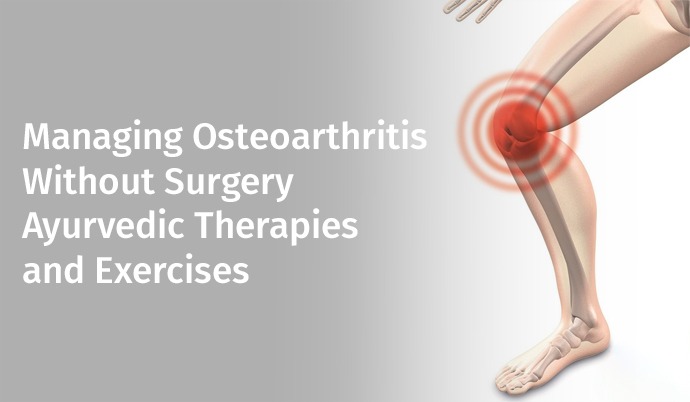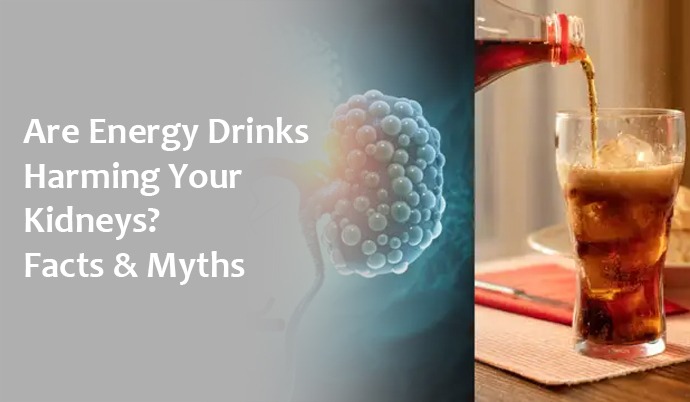
Osteoarthritis: A Degeneration explained in a Nutshell
When your cartilage wears out over time, you get what is known as osteoarthritis. The pad between the bone becomes less, and each step is metal on metal-ouch. Though age is a significant factor, osteoarthritis can strike anyone who has to cope with:
● Obesity
● Sedentary lifestyle
● Repeated joint forces
● Past injuries
● Even genetics
The area of modern medicine often centres on painkillers and surgery. Ayurveda points out: “Enough of merely soothing the pain, but comprehending the cause underlying it instead.”
The View of Ayurveda: It Has to be Vata
Ayurveda comes with the notion that osteoarthritis arises due to the disproportion of Vata dosha, which controls all movement factors in the body. When vata is out of balance, it offers dryness, roughness, and stiffness to the joints. Anyone can recognise Sandhivata, which is the Ayurvedic term for osteoarthritis.
The Ayurvedic approach is not placing a patch. It is about returning the body to balance, improving tissue nutrition, stimulating and soothing it, and resolving inflammation and pain internally.
Best Ayurvedic Treatments which Really Work
Now leave this secret therapy business, this is what real Ayurvedic management is:
1. Oil Massage Therapy (Abhyanga)
Deep massage is done with warm herbal oil (such as Mahanarayan Taila) deep into the joints and muscles.
● Relieves stiffness
● Boosts circulation
● Oils up stiff joints
● Reduces stress in the body
2. Swedana (Interferential Herbal Steam Therapy)
This comes after Abhyanga. You are steamed gently with Vata-pacifying herbs.
● Relieves toxins
● It is an access opener
● Loosens muscle pains
● Improves flexibility
3. Janu Basti & Greeva Basti (Localised Oil Cures)
Imagine it as a romantic oil Jacuzzi, on your knees or on your back. The oil is held by a segment of dough after being placed over the painful joint.
● Nourishes cartilage very abundantly.
● Deeply penetrates into cartilaginous tissue.
● Relieves pain (recurring)
● Makes connective tissues more powerful
4. Basti (Medicated Enemas)
Sounds tricky, but that is what Ayurveda comes to if there is a Vata problem. Decoctions and oils are infiltrated via the colon.
● Detoxifies
● Feeds the inside of joints
● Side-effect-free, long-term outcomes
5. Joint-Approved Ayurvedic Herbs
● Ashwagandha Strength + relieves stress.
● Shallaki (Boswellia) Natural anti-inflammatory.
● Guggulu -Clears toxins + supports repair even more.
● Dashmool - Renews rotten tissues.
These are mostly consumed in special formulas, a personalised combination after a dosha evaluation. Self-medication? Big no-no.
Move It to Improve It: Exercises Friendly on Joints
One thing is clear, now we are not talking about rest as part of recovery. The more you placate your joint, the more it revolts. Moving gently, Ayurveda encourages is meant to maintain the movement of energy and build up muscle around your joint.
1. Osteoarthritis yoga relief
Even yoga is gold, however slow and controlled. Do not strain joints-fluid is key, not pressure. Best Poses:
● Tadasana (Mountain Pose): Enhances posture
● Vrikshasana (Tree Pose): Leg muscles become stronger
● Setu Bandhasana (Bridge Pose): Apertures hips + knees
● Cat-Cow: Flexibility of the spine and mobility of the joints
2. Aqua Therapy
Water has been magic. Lessens the impact on joints and creates strength.
● It suits old or obese people perfectly
● Assists the range of motion
● Soothes inflammation
3. Low Load Training
Resistive bands > heavy weights. Make reps slow, controlled.
● Tone muscles of the joint area
● Prevents further
● Cartilage breakdown
● Increases the stability of joints
Eating Right to Allay Joint Pains: Ayurvedic Tips
Vata is cold, dry and harsh. And your diet? It should be just the reverse. Go for:
● Hot, stodgy dishes
● Prepared vegetables, unprocessed grain
● Ghee, sesame oil, olive oil
● Turmeric, ginger, and fenugreek are examples of spices.
Avoid:
● Raw salads, cold food, dry nibbles
● Overdose of tea/coffee
● Frozen or packaged foods.
Sir Ganga Ram Hospital is connecting ancient knowledge and modern medicine. Sir Ganga Ram Hospital lies at the centre of Delhi, bringing wholesome healthcare to people more than ever before. The Integrative Medicine and Ayurvedic Wellness Department works with Orthopaedic specialists to develop an osteoarthritis management plan specific to the individual. They specialise in:
● An in-depth dosha diagnosis and Panchakarma regimes
● Physiotherapy, yoga therapists and pain clinics
● Individual nutritional advice which focuses on joint nutrition
● Non-surgical joint care treatments with apparent enhancements
● Patients usually get less stiff, more mobile, and fewer flare-ups without surgery involved.
Osteoarthritis is not a death sentence; it is a wake-up call. Your body is demanding a more conscious means to move, eat and live. Ayurveda will not cure instantly. But with dedication, regularity, and the appropriate advice, you can certainly get osteoarthritis under control, ease the discomfort and regain mobility naturally. Since healing does not involve patching up broken bits. It is a matter of finding your flow once again. Hence, for specialised care and diagnosis, book an appointment with Sir Ganga Ram Hospital.
Osteoarthritis is not just a mere wrinkle in the joint; it is a total lifestyle changer. Imagine yourself walking around like a boss, and the next thing you know, you are on your knees rubbing them as they have betrayed you. To millions of people around the world, Osteoarthritis is a constant test of will, even with simple movements. The good nelws, however, is that you do not have to have surgery as your only saviour.
Ayurveda, the ancient science of life, provides a well-grounded guideline to treat osteoarthritis, or anything with a holistic path that does not involve blades or beds but balance. Add the appropriate exercises to that, and boom, your joints are waltzing once more (at least walking without wincing). Okay, so what are the secrets to this?
Osteoarthritis: A Degeneration explained in a Nutshell
When your cartilage wears out over time, you get what is known as osteoarthritis. The pad between the bone becomes less, and each step is metal on metal-ouch. Though age is a significant factor, osteoarthritis can strike anyone who has to cope with:
● Obesity
● Sedentary lifestyle
● Repeated joint forces
● Past injuries
● Even genetics
The area of modern medicine often centres on painkillers and surgery. Ayurveda points out: “Enough of merely soothing the pain, but comprehend the cause underlying it instead.”
The View of Ayurveda: It Has to be Vata
Ayurveda comes with the notion that osteoarthritis arises due to the disproportion of Vata dosha, which controls all movement factors in the body. When vata is out of balance, it offers dryness, roughness, and stiffness to the joints. Anyone can recognise Sandhivata, which is the Ayurvedic term for osteoarthritis.
The Ayurvedic approach is not placing a patch. It is about returning the body to balance, improving tissue nutrition, stimulating and soothing it, and resolving inflammation and pain internally.
Best Ayurvedic Treatments which Really Work
Now leave this secret therapy business, this is what real Ayurvedic management is:
1. Oil Massage Therapy (Abhyanga)
Deep massage is done with warm herbal oil (such as Mahanarayan Taila) deep into the joints and muscles.
● Relieves stiffness
● Boosts circulation
● Oils up stiff joints
● Reduces stress in the body
2. Swedana (Interferential Herbal Steam Therapy)
This comes after Abhyanga. You are steamed gently with Vata-pacifying herbs.
● Relieves toxins
● It is an access opener
● Loosens muscle pains
● Improves flexibility
3. Janu Basti & Greeva Basti (Localised Oil Cures)
Imagine it as a romantic oil Jacuzzi, on your knees or on your back. The oil is held by a segment of dough after being placed over the painful joint.
● Nourishes cartilage very abundantly.
● Deeply penetrates into cartilaginous tissue.
● Relieves pain (recurring)
● Makes connective tissues more powerful
4. Basti (Medicated Enemas)
Sounds tricky, but that is what Ayurveda comes to if there is a Vata problem. Decoctions and oils are infiltrated via the colon.
● Detoxifies
● Feeds the inside of joints
● Side-effect-free, long-term outcomes
5. Joint-Approved Ayurvedic Herbs
● Ashwagandha Strength + relieves stress.
● Shallaki (Boswellia) Natural anti-inflammatory.
● Guggulu -Clears toxins + supports repair even more.
● Dashmool - Renews rotten tissues.
These are mostly consumed in special formulas, a personalised combination after a dosha evaluation. Self-medication? Big no-no.
Move It to Improve It: Exercises Friendly on Joints
One thing is clear, now we are not talking about rest as part of recovery. The more you placate your joint, the more it revolts. Moving gently, Ayurveda encourages is meant to maintain the movement of energy and build up muscle around your joint.
1. Osteoarthritis yoga relief
Even yoga is gold, however slow and controlled. Do not strain joints-fluid is key, not pressure. Best Poses:
● Tadasana (Mountain Pose): Enhances posture
● Vrikshasana (Tree Pose): Leg muscles become stronger
● Setu Bandhasana (Bridge Pose): Apertures hips + knees
● Cat-Cow: Flexibility of the spine and mobility of the joints
2. Aqua Therapy
Water has been magic. Lessens the impact on joints and creates strength.
● It suits old or obese people perfectly
● Assists the range of motion
● Soothes inflammation
3. Low Load Training
Resistive bands > heavy weights. Make reps slow, controlled.
● Tone muscles of the joint area
● Prevents further
● Cartilage breakdown
● Increases the stability of joints
Eating Right to Allay Joint Pains: Ayurvedic Tips
Vata is cold, dry and harsh. And your diet? It should be just the reverse. Go for:
● Hot, stodgy dishes
● Prepared vegetables, unprocessed grain
● Ghee, sesame oil, olive oil
● Turmeric, ginger, and fenugreek are examples of spices.
Avoid:
● Raw salads, cold food, dry nibbles
● Overdose of tea/coffee
● Frozen or packaged foods
Sir Ganga Ram Hospital is connecting ancient knowledge and modern medicine. Sir Ganga Ram Hospital lies at the centre of Delhi, bringing wholesome healthcare to people more than ever before. The Integrative Medicine and Ayurvedic Wellness Department works with Orthopaedic specialists to develop an osteoarthritis management plan specific to the individual. They specialise in:
● An in-depth dosha diagnosis and Panchakarma regimes
● Physiotherapy, yoga therapists and pain clinics
● Individual nutritional advice which focuses on joint nutrition
● Non-surgical joint care treatments with apparent enhancements
● Patients usually get less stiff, more mobile, and fewer flare-ups without surgery involved.
Osteoarthritis is not a death sentence; it is a wake-up call. Your body is demanding a more conscious means to move, eat and live. Ayurveda will not cure instantly. But with dedication, regularity, and the appropriate advice, you can certainly get osteoarthritis under control, ease the discomfort and regain mobility naturally. Since healing does not involve patching up broken bits. It is a matter of finding your flow once again. Hence, for specialised care and diagnosis, book an appointment with Sir Ganga Ram Hospital.
.jpeg)



